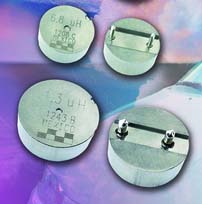The design of transportation systems is at a crossroads for certain. The move to electric and hybrid-electric automobiles is very significant now and I think it will continue to grow quickly. When will that technology, along newer automotive safety systems, be widely implemented in buses, trucks, and trains? There are some hybrid buses, but not a lot. Maybe a better question is why hasn't it been done already. But, there are many active innovations in public transport and in automotive.
Public transportation
There are some new and interesting applications in public transportation, and systems in many cities could use a number of updates. Fare collection is one area to look at. Rainer Lutz, senior global marketing manager at NXP tells us that “electronic ticketing is making access to public transport faster, more reliable, and more secure. Mifare, NXP's extensive range of contactless IC products, is the most popular and advanced development platform. It is used in over 650 cities from London to Auckland and from Moscow to Sao Paulo.”
“Innovative smart mobility concepts are being implemented that combine metro, bus, taxi and micro payments as well as bike and car rental on a single card. In addition, regional and countrywide schemes extend the scope of the passenger's travel experience incorporating street parking or museum entrance fees, for example.”
Rainer adds that “the latest industry trends also include mobile ticketing using NFC phones and banking cards which can be used for public transportation; both can use Mifare functionality for a seamless integration. Mobile ticketing enables the integration of travel information and ticketing in one device, encouraging a sustainable urban lifestyle.”
Automotive convenience
Some significant automotive advances fall under a heading of convenience — but, at lease for some people, these may be moving to the Can't Live Without category. Google and Apple Maps with traffic info and Garmin systems with traffic updates are being widely used. And now there are signs on city streets showing real-time availability of parking spaces in nearby garages. But, I'd have to say the main emphasis in transportation electronics is in automotive safety.
Automotive safety
Renesas is one of the leading chip suppliers for automotive. I spoke with Amrit Vivekanand, vice president of the automotive marketing unit at Renesas. Amrit said the “with all the post-crash safety technology, such as air bags, that we have today, there are still close to 100 automotive related deaths per day in the U.S., and this statistic unfortunately has been staying flat. Focus is shifting to pre-crash active safety and crash prevention as the only way to reduce the level of fatalities. This shift will drive tremendous electronic content into the vehicle.”
“All this pre-crash and post-crash technologies and the innovation that has been spawned will make autonomous driving a reality, delivering intelligent and 'self-aware' automobiles. For the IC manufacturer, we know that devices that combine the performance of high-end SOCs and the safety levels of drivetrain/chassis applications will be required.”
The AEC-Q200-qualified IHTH-0750IZ-5A and IHTH-1125KZ-5A high-current, high-temperature through-hole inductors come in 0750 and 1125 case sizes. Targeting automotive applications, they operate up to 155°C, with rated currents to 125 A and values from 0.47 to 100 µH.

The inductors have a frequency range up to 10 MHz, for some values, and handle high transient-current spikes without hard saturation. They have a RoHS-compliant shielded composite construction that reduces buzz noise to ultra-low levels. They cost $2.50 to $4.50 ea/1,000.
Vishay Intertechnology: www.vishay.com
The Qorivva MPC577xK 32-bit embedded MCU is designed for automotive radar systems, providing high levels of digital and analog integration for next-generation advanced driver assistance systems (ADAS) systems. When combined with the MRD2001 77-GHz radar front-end chipset, it offers a complete system-level radar solution.

The IC can be used to in long- and mid-range frontal radar for adaptive cruise control and autonomous emergency braking systems, as well as manage blind spot and side-impact detection. The device has two 266 MHz e200z7 cores and two e200Z4 lockstep cores for functional safety along with a Radar processing platform, a 10/100 Ethernet, LFATS, and Flexray communications network, 4 Mbytes of nonvolatile memory, and an external memory controller. It operates over -40° to 125°C using 3.3- and 1.2-V supplies.
Freescale Semiconductor: www.freescale.com
40-V family automotive-qualified MOSFETs offer low RDS(on)
A family of 22 automotive-qualified COOLiRFET MOSFETs deliver benchmark on-state resistance — RDS(on) — for heavy-load applications including electric power steering (EPS), braking systems and other heavy loads on internal combustion engine, and micro hybrid vehicle platforms. The devices are AEC-Q101 qualified, using Gen12.7 trench technology provided in D2Pak-7P, D2Pak, DPak, TO-262, IPAK, and TO-220 packages.

The D2Pak-7P AUIRFS8409-7P delivers RDS(on) max as low as 0.75-mΩ at 10 VGS with a current rating up to 240 A. The devices offer 765-mJ single-pulse avalanche energy and a tested value to 1,485 mJ. Pricing begins at $0.39 each for the AUIRFU8401 to $1.70 each for the AUIRFS8409-7P in 100,000 quantities.
International Rectifier: www.irf.com
Advertisement
Learn more about Electronic Products Magazine





